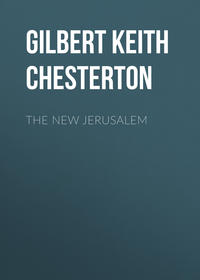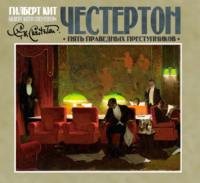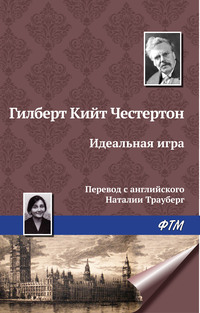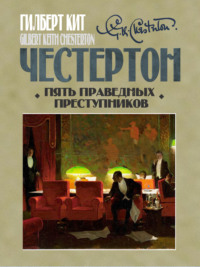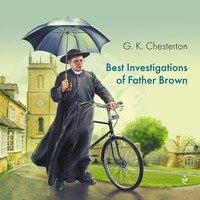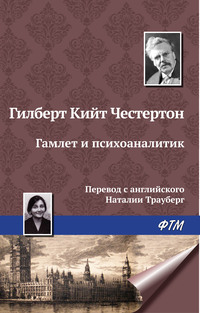 полная версия
полная версияAppreciations and Criticisms of the Works of Charles Dickens
It is exactly in these absurd characters, then, that we can find a mass of psychological and ethical suggestion. This cannot be found in the serious characters except indeed in some of the later experiments: there is a little of such psychological and ethical suggestion in figures like Gridley, like Jasper, like Bradley Headstone. But in these earlier books at least, such as The Old Curiosity Shop, the grave or moral figures throw no light upon morals. I should maintain this generalisation even in the presence of that apparent exception The Christmas Carol with its trio of didactic ghosts. Charity is certainly splendid, at once a luxury and a necessity; but Dickens is not most effective when he is preaching charity seriously; he is most effective when he is preaching it uproariously; when he is preaching it by means of massive personalities and vivid scenes. One might say that he is best not when he is preaching his human love, but when he is practising it. In his grave pages he tells us to love men; but in his wild pages he creates men whom we can love. By his solemnity he commands us to love our neighbours. By his caricature he makes us love them.
There is an odd literary question which I wonder is not put more often in literature. How far can an author tell a truth without seeing it himself? Perhaps an actual example will express my meaning. I was once talking to a highly intelligent lady about Thackeray’s Newcomes. We were speaking of the character of Mrs. Mackenzie, the Campaigner, and in the middle of the conversation the lady leaned across to me and said in a low, hoarse, but emphatic voice, “She drank. Thackeray didn’t know it; but she drank.” And it is really astonishing what a shaft of white light this sheds on the Campaigner, on her terrible temperament, on her agonised abusiveness and her almost more agonised urbanity, on her clamour which is nevertheless not open or explicable, on her temper which is not so much bad temper as insatiable, bloodthirsty, man-eating temper. How far can a writer thus indicate by accident a truth of which he is himself ignorant? If truth is a plan or pattern of things that really are, or in other words, if truth truly exists outside ourselves, or in other words, if truth exists at all, it must be often possible for a writer to uncover a corner of it which he happens not to understand, but which his reader does happen to understand. The author sees only two lines; the reader sees where they meet and what is the angle. The author sees only an arc or fragment of a curve; the reader sees the size of the circle. The last thing to say about Dickens, and especially about books like The Old Curiosity Shop, is that they are full of these unconscious truths. The careless reader may miss them. The careless author almost certainly did miss them. But from them can be gathered an impression of real truth to life which is for the grave critics of Dickens an almost unknown benefit, buried treasure. Here for instance is one of them out of The Old Curiosity Shop. I mean the passage in which (by a blazing stroke of genius) the dashing Mr. Chuckster, one of the Glorious Apollos of whom Mr. Swiveller was the Perpetual Grand, is made to entertain a hatred bordering upon frenzy for the stolid, patient, respectful, and laborious Kit. Now in the formal plan of the story Mr. Chuckster is a fool, and Kit is almost a hero; at least he is a noble boy. Yet unconsciously Dickens made the idiot Chuckster say something profoundly suggestive on the subject. In speaking of Kit Mr. Chuckster makes use of these two remarkable phrases; that Kit is “meek” and that he is “a snob.” Now Kit is really a very fresh and manly picture of a boy, firm, sane, chivalrous, reasonable, full of those three great Roman virtues which Mr. Belloc has so often celebrated, virtus and verecundia and pietas. He is a sympathetic but still a straightforward study of the best type of that most respectable of all human classes, the respectable poor. All this is true; all that Dickens utters in praise of Kit is true; nevertheless the awful words of Chuckster remain written on the eternal skies. Kit is meek and Kit is a snob. His natural dignity does include and is partly marred by that instinctive subservience to the employing class which has been the comfortable weakness of the whole English democracy, which has prevented their making any revolution for the last two hundred years. Kit would not serve any wicked man for money, but he would serve any moderately good man and the money would give a certain dignity and decisiveness to the goodness. All this is the English popular evil which goes along with the English popular virtues of geniality, of homeliness, tolerance and strong humour, hope and an enormous appetite for a hand-to-mouth happiness. The scene in which Kit takes his family to the theatre is a monument of the massive qualities of old English enjoyment. If what we want is Merry England, our antiquarians ought not to revive the Maypole or the Morris Dancers; they ought to revive Astley’s and Sadler’s Wells and the old solemn Circus and the old stupid Pantomime, and all the sawdust and all the oranges. Of all this strength and joy in the poor, Kit is a splendid and final symbol. But amid all his masculine and English virtue, he has this weak touch of meekness, or acceptance of the powers that be. It is a sound touch; it is a real truth about Kit. But Dickens did not know it. Mr. Chuckster did.
Dickens’s stories taken as a whole have more artistic unity than appears at the first glance. It is the immediate impulse of a modern critic to dismiss them as mere disorderly scrap-books with very brilliant scraps. But this is not quite so true as it looks. In one of Dickens’s novels there is generally no particular unity of construction; but there is often a considerable unity of sentiment and atmosphere. Things are irrelevant, but not somehow inappropriate. The whole book is written carelessly; but the whole book is generally written in one mood. To take a rude parallel from the other arts, we may say that there is not much unity of form, but there is much unity of colour. In most of the novels this can be seen. Nicholas Nickleby, as I have remarked, is full of a certain freshness, a certain light and open-air curiosity, which irradiates from the image of the young man swinging along the Yorkshire roads in the sun. Hence the comic characters with whom he falls in are comic characters in the same key; they are a band of strolling players, charlatans and poseurs, but too humane to be called humbugs. In the same way, the central story of Oliver Twist is sombre; and hence even its comic character is almost sombre; at least he is too ugly to be merely amusing. Mr. Bumble is in some ways a terrible grotesque; his apoplectic visage recalls the “fire-red Cherubimme’s face,” which added such horror to the height and stature of Chaucer’s Sompnour. In both these cases even the riotous and absurd characters are a little touched with the tint of the whole story. But this neglected merit of Dickens can certainly be seen best in The Old Curiosity Shop.
The curiosity shop itself was a lumber of grotesque and sinister things, outlandish weapons, twisted and diabolic decorations. The comic characters in the book are all like images bought in an old curiosity shop. Quilp might be a gargoyle. He might be some sort of devilish door-knocker, dropped down and crawling about the pavement. The same applies to the sinister and really terrifying stiffness of Sally Brass. She is like some old staring figure cut out of wood. Sampson Brass, her brother, again is a grotesque in the same rather inhuman manner; he is especially himself when he comes in with the green shade over his eye. About all this group of bad figures in The Old Curiosity Shop there is a sort of diablerie. There is also within this atmosphere an extraordinary energy of irony and laughter. The scene in which Sampson Brass draws up the description of Quilp, supposing him to be dead, reaches a point of fiendish fun. “We will not say very bandy, Mrs. Jiniwin,” he says of his friend’s legs, “we will confine ourselves to bandy. He is gone, my friends, where his legs would never be called in question.” They go on to the discussion of his nose, and Mrs. Jiniwin inclines to the view that it is flat. “Aquiline, you hag! Aquiline,” cries Mr. Quilp, pushing in his head and striking his nose with his fist. There is nothing better in the whole brutal exuberance of the character than that gesture with which Quilp punches his own face with his own fist. It is indeed a perfect symbol; for Quilp is always fighting himself for want of anybody else. He is energy, and energy by itself is always suicidal; he is that primordial energy which tears and which destroys itself.
BARNABY RUDGE
Barnaby Rudge was written by Dickens in the spring and first flowing tide of his popularity; it came immediately after The Old Curiosity Shop, and only a short time after Pickwick. Dickens was one of those rare but often very sincere men in whom the high moment of success almost coincides with the high moment of youth. The calls upon him at this time were insistent and overwhelming; this necessarily happens at a certain stage of a successful writer’s career. He was just successful enough to invite offers and not successful enough to reject them. At the beginning of his career he could throw himself into Pickwick because there was nothing else to throw himself into. At the end of his life he could throw himself into A Tale of Two Cities, because he refused to throw himself into anything else. But there was an intervening period, early in his life, when there was almost too much work for his imagination, and yet not quite enough work for his housekeeping. To this period Barnaby Rudge belongs. And it is a curious tribute to the quite curious greatness of Dickens that in this period of youthful strain we do not feel the strain but feel only the youth. His own amazing wish to write equalled or outstripped even his readers’ amazing wish to read. Working too hard did not cure him of his abstract love of work. Unreasonable publishers asked him to write ten novels at once; but he wanted to write twenty novels at once. All this period is strangely full of his own sense at once of fertility and of futility; he did work which no one else could have done, and yet he could not be certain as yet that he was anybody.
Barnaby Rudge marks this epoch because it marks the fact that he is still confused about what kind of person he is going to be. He has already struck the note of the normal romance in Nicholas Nickleby; he has already created some of his highest comic characters in Pickwick and The Old Curiosity Shop, but here he betrays the fact that it is still a question what ultimate guide he shall follow. Barnaby Rudge is a romantic, historical novel. Its design reminds us of Scott; some parts of its fulfilment remind us, alas! of Harrison Ainsworth. It is a very fine romantic historical novel; Scott would have been proud of it. But it is still so far different from the general work of Dickens that it is permissible to wonder how far Dickens was proud of it. The book, effective as it is, is almost entirely devoted to dealings with a certain artistic element, which (in its mere isolation) Dickens did not commonly affect; an element which many men of infinitely less genius have often seemed to affect more successfully; I mean the element of the picturesque.
It is the custom in many quarters to speak somewhat sneeringly of that element which is broadly called the picturesque. It is always felt to be an inferior, a vulgar, and even an artificial form of art. Yet two things may be remarked about it. The first is that, with few exceptions, the greatest literary artists have been not only particularly clever at the picturesque, but particularly fond of it. Shakespeare, for instance, delighted in certain merely pictorial contrasts which are quite distinct from, even when they are akin to, the spiritual view involved. For instance, there is admirable satire in the idea of Touchstone teaching worldly wisdom and worldly honour to the woodland yokels. There is excellent philosophy in the idea of the fool being the representative of civilisation in the forest. But quite apart from this deeper meaning in the incident, the mere figure of the jester, in his bright motley and his cap and bells, against the green background of the forest and the rude forms of the shepherds, is a strong example of the purely picturesque. There is excellent tragic irony in the confrontation of the melancholy philosopher among the tombs with the cheerful digger of the graves. It sums up the essential point, that dead bodies can be comic; it is only dead souls that can be tragic. But quite apart from such irony, the mere picture of the grotesque gravedigger, the black-clad prince, and the skull is a picture in the strongest sense picturesque. Caliban and the two shipwrecked drunkards are an admirable symbol; but they are also an admirable scene. Bottom, with the ass’s head, sitting in a ring of elves, is excellent moving comedy, but also excellent still life. Falstaff with his huge body, Bardolph with his burning nose, are masterpieces of the pen; but they would be fine sketches even for the pencil. King Lear, in the storm, is a landscape as well as a character study. There is something decorative even about the insistence on the swarthiness of Othello, or the deformity of Richard III. Shakespeare’s work is much more than picturesque; but it is picturesque. And the same which is said here of him by way of example is largely true of the highest class of literature. Dante’s Divine Comedy is supremely important as a philosophy; but it is important merely as a panorama. Spenser’s Faery Queen pleases us as an allegory; but it would please us even as a wall-paper. Stronger still is the case of Chaucer who loved the pure picturesque, which always includes something of what we commonly call the ugly. The huge stature and startling scarlet face of the Sompnour is in just the same spirit as Shakespeare’s skulls and motley; the same spirit gave Chaucer’s miller bagpipes, and clad his doctor in crimson. It is the spirit which, while making many other things, loves to make a picture.
Now the second thing to be remarked in apology for the picturesque is, that the very thing which makes it seem trivial ought really to make it seem important; I mean the fact that it consists necessarily of contrasts. It brings together types that stand out from their background, but are abruptly different from each other, like the clown among the fairies or the fool in the forest. And his audacious reconciliation is a mark not of frivolity but of extreme seriousness. A man who deals in harmonies, who only matches stars with angels or lambs with spring flowers, he indeed may be frivolous; for he is taking one mood at a time, and perhaps forgetting each mood as it passes. But a man who ventures to combine an angel and an octopus must have some serious view of the universe. The man who should write a dialogue between two early Christians might be a mere writer of dialogues. But a man who should write a dialogue between an early Christian and the Missing Link would have to be a philosopher. The more widely different the types talked of, the more serious and universal must be the philosophy which talks of them. The mark of the light and thoughtless writer is the harmony of his subject matter; the mark of the thoughtful writer is its apparent diversity. The most flippant lyric poet might write a pretty poem about lambs; but it requires something bolder and graver than a poet, it requires an ecstatic prophet, to talk about the lion lying down with the lamb.
Dickens, at any rate, strongly supports this conception: that great literary men as such do not despise the purely pictorial. No man’s works have so much the quality of illustrating themselves. Few men’s works have been more thoroughly and eagerly illustrated; few men’s works can it have been better fun to illustrate. As a rule this fascinating quality in the mere fantastic figures of the tale was inseparable from their farcical quality in the tale. Stiggins’s red nose is distinctly connected with the fact that he is a member of the Ebenezer Temperance Association; Quilp is little, because a little of him goes a long way. Mr. Carker smiles and smiles and is a villain; Mr. Chadband is fat because in his case to be fat is to be hated. The story is immeasurably more important than the picture; it is not mere indulgence in the picturesque. Generally it is an intellectual love of the comic; not a pure love of the grotesque.
But in one book Dickens suddenly confesses that he likes the grotesque even without the comic. In one case he makes clear that he enjoys pure pictures with a pure love of the picturesque. That place is Barnaby Rudge. There had indeed been hints of it in many episodes in his books; notably, for example, in that fine scene of the death of Quilp – a scene in which the dwarf remains fantastic long after he has ceased to be in any way funny. Still, the dwarf was meant to be funny. Humour of a horrible kind, but still humour, is the purpose of Quilp’s existence and position in the book. Laughter is the object of all his oddities. But laughter is not the object of Barnaby Rudge’s oddities. His idiot costume and his ugly raven are used for the purpose of the pure grotesque; solely to make a certain kind of Gothic sketch.
It is commonly this love of pictures that drives men back upon the historical novel. But it is very typical of Dickens’s living interest in his own time, that though he wrote two historical novels they were neither of them of very ancient history. They were both, indeed, of very recent history; only they were those parts of recent history which were specially picturesque. I do not think that this was due to any mere consciousness on his part that he knew no history. Undoubtedly he knew no history; and he may or may not have been conscious of the fact. But the consciousness did not prevent him from writing a History of England. Nor did it prevent him from interlarding all or any of his works with tales of the pictorial past, such as the tale of the broken swords in Master Humphrey’s Clock, or the indefensibly delightful nightmare of the lady in the stage-coach, which helps to soften the amiable end of Pickwick. Neither, worst of all, did it prevent him from dogmatising anywhere and everywhere about the past, of which he knew nothing; it did not prevent him from telling the bells to tell Trotty Veck that the Middle Ages were a failure, nor from solemnly declaring that the best thing that the mediæval monks ever did was to create the mean and snobbish quietude of a modern cathedral city. No, it was not historical reverence that held him back from dealing with the remote past; but rather something much better – a living interest in the living century in which he was born. He would have thought himself quite intellectually capable of writing a novel about the Council of Trent or the First Crusade. He would have thought himself quite equal to analysing the psychology of Abelard or giving a bright, satiric sketch of St. Augustine. It must frankly be confessed that it was not a sense of his own unworthiness that held him back; I fear it was rather a sense of St. Augustine’s unworthiness. He could not see the point of any history before the first slow swell of the French Revolution. He could understand the revolutions of the eighteenth century; all the other revolutions of history (so many and so splendid) were unmeaning to him. But the revolutions of the eighteenth century he did understand; and to them therefore he went back, as all historical novelists go back, in search of the picturesque. And from this fact an important result follows.
The result that follows is this: that his only two historical novels are both tales of revolutions – of eighteenth-century revolutions. These two eighteenth-century revolutions may seem to differ, and perhaps do differ in everything except in being revolutions and of the eighteenth century. The French Revolution, which is the theme of A Tale of Two Cities, was a revolt in favour of all that is now called enlightenment and liberation. The great Gordon Riot, which is the theme of Barnaby Rudge, was a revolt in favour of something which would now be called mere ignorant and obscurantist Protestantism. Nevertheless both belonged more typically to the age out of which Dickens came – the great sceptical and yet creative eighteenth century of Europe. Whether the mob rose on the right side or the wrong they both belonged to the time in which a mob could rise, in which a mob could conquer. No growth of intellectual science or of moral cowardice had made it impossible to fight in the streets, whether for the republic or for the Bible. If we wish to know what was the real link, existing actually in ultimate truth, existing unconsciously in Dickens’s mind, which connected the Gordon Riots with the French Revolution, the link may be defined though not with any great adequacy. The nearest and truest way of stating it is that neither of the two could possibly happen in Fleet Street to-morrow evening.
Another point of resemblance between the two books might be found in the fact that they both contain the sketch of the same kind of eighteenth-century aristocrat, if indeed that kind of aristocrat really existed in the eighteenth century. The diabolical dandy with the rapier and the sneer is at any rate a necessity of all normal plays and romances; hence Mr. Chester has a right to exist in this romance, and Foulon a right to exist in a page of history almost as cloudy and disputable as a romance. What Dickens and other romancers do probably omit from the picture of the eighteenth-century oligarch is probably his liberality. It must never be forgotten that even when he was a despot in practice he was generally a liberal in theory. Dickens and romancers make the pre-revolution tyrant a sincere believer in tyranny; generally he was not. He was a sceptic about everything, even about his own position. The romantic Foulon says of the people, “Let them eat grass,” with bitter and deliberate contempt. The real Foulon (if he ever said it at all) probably said it as a sort of dreary joke because he couldn’t think of any other way out of the problem. Similarly Mr. Chester, a cynic as he is, believes seriously in the beauty of being a gentleman; a real man of that type probably disbelieved in that as in everything else. Dickens was too bracing, one may say too bouncing himself to understand the psychology of fatigue in a protected and leisured class. He could understand a tyrant like Quilp, a tyrant who is on his throne because he has climbed up into it, like a monkey. He could not understand a tyrant who is on his throne because he is too weary to get out of it. The old aristocrats were in a dead way quite good-natured. They were even humanitarians; which perhaps accounts for the extent to which they roused against themselves the healthy hatred of humanity. But they were tired humanitarians; tired with doing nothing. Figures like that of Mr. Chester, therefore, fail somewhat to give the true sense of something hopeless and helpless which led men to despair of the upper class. He has a boyish pleasure in play-acting; he has an interest in life; being a villain is his hobby. But the true man of that type had found all hobbies fail him. He had wearied of himself as he had wearied of a hundred women. He was graceful and could not even admire himself in the glass. He was witty and could not even laugh at his own jokes. Dickens could never understand tedium.
There is no mark more strange and perhaps sinister of the interesting and not very sane condition of our modern literature, than the fact that tedium has been admirably described in it. Our best modern writers are never so exciting as they are about dulness. Mr. Rudyard Kipling is never so powerful as when he is painting yawning deserts, aching silences, sleepless nights, or infernal isolation. The excitement in one of the stories of Mr. Henry James becomes tense, thrilling, and almost intolerable in all the half hours during which nothing whatever is said or done. We are entering again into the mind, into the real mind of Foulon and Mr. Chester. We begin to understand the deep despair of those tyrants whom our fathers pulled down. But Dickens could never have understood that despair; it was not in his soul. And it is an interesting coincidence that here, in this book of Barnaby Rudge, there is a character meant to be wholly grotesque, who, nevertheless, expresses much of that element in Dickens which prevented him from being a true interpreter of the tired and sceptical aristocrat.



